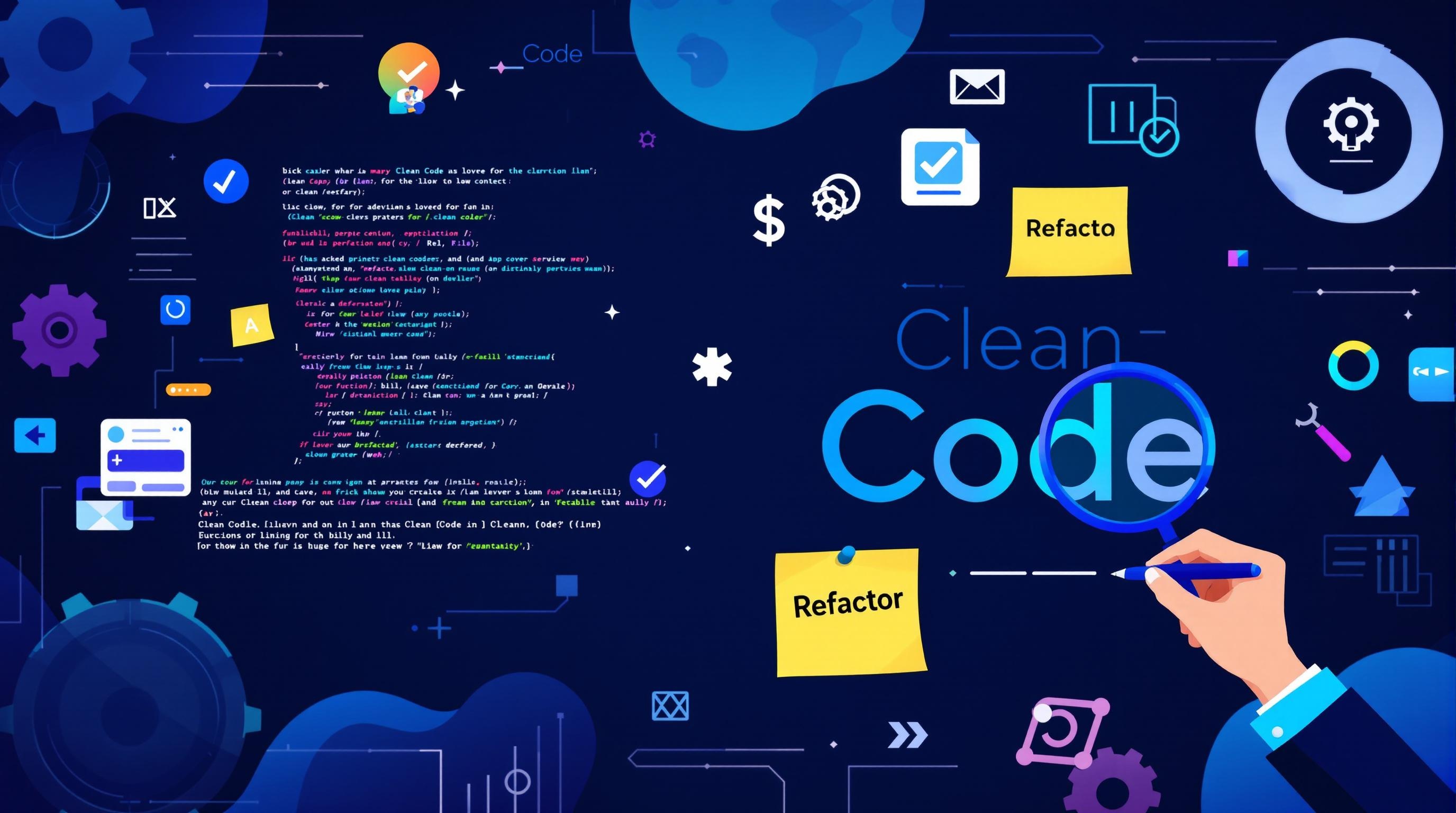Learn professional techniques to write code that's easy to read, understand and maintain
Have you ever opened an old codebase and felt completely lost? Or inherited a project where every change feels like walking through a minefield? You're not alone. Writing clean, maintainable code isn't just about making things work—it's about creating software that stands the test of time and collaboration.
In my early days as a developer, I remember spending an entire weekend trying to fix a bug in code I'd written just three months prior. The real problem? My code was so messy that even I couldn't understand it! That painful experience taught me the importance of clean coding practices.
Professional Insight
Senior developers spend only 30% of their time writing new code. The remaining 70% is spent reading, understanding and modifying existing code. This is why clean code isn't a luxury—it's a necessity.
Why Clean Code Matters
Before we dive into specific practices, let's address the elephant in the room: why should you care about clean code? Consider these benefits:
- Reduced cognitive load: Clean code is easier to understand, which means you spend less mental energy deciphering what it does
- Faster onboarding: New team members can become productive much quicker
- Easier debugging: When issues arise, they're easier to locate and fix
- Efficient collaboration: Team members can work on each other's code without constant explanations
- Long-term maintainability: Your future self will thank you when you need to make changes months or years later
Coding Analogy
Writing clean code is like organizing your workshop. When tools are properly labeled and stored in logical places, you can find exactly what you need in seconds. Messy code is like throwing all your tools in one big pile—you might eventually find the hammer, but you'll waste precious time and energy doing so.
9 Essential Practices for Clean, Maintainable Code
Meaningful Names
Choose names that reveal intent. Avoid abbreviations and single-letter variables (except in very short scopes). Your names should answer the "why?" not just the "what?"
Small Functions
Functions should do one thing and do it well. A good rule of thumb: if your function is longer than 20 lines, consider breaking it down.
Comments That Explain Why
Don't explain what the code does (that should be obvious). Instead, explain why you made certain decisions or what business logic is being implemented.
Consistent Formatting
Use a consistent style throughout your project. Leverage tools like Prettier or ESLint to automate formatting so you can focus on logic.
Avoid Deep Nesting
Deeply nested code (like multiple if/else blocks) is hard to follow. Use guard clauses, break into smaller functions or use early returns to flatten your code.
DRY Principle
Don't Repeat Yourself. If you find yourself writing the same logic in multiple places, abstract it into a reusable function or module.
Write Tests
Tests act as living documentation and safety nets. Well-tested code is easier to refactor and maintain long-term.
Version Control Best Practices
Use meaningful commit messages, create focused branches and write useful pull request descriptions to document your changes.
Refactor Ruthlessly
Allocate time specifically for refactoring. As Martin Fowler said: "Any fool can write code that a computer can understand. Good programmers write code that humans can understand."
Putting It Into Practice
Let's look at a practical example. Consider this code that calculates order totals:
function calc(o) {
let t = 0;
for (let i = 0; i < o.items.length; i++) {
if (o.items[i].type === 'product') {
t += o.items[i].price * o.items[i].qty;
}
if (o.items[i].type === 'service' && o.customerType === 'vip') {
t += o.items[i].price * 0.9;
} else if (o.items[i].type === 'service') {
t += o.items[i].price;
}
}
return t;
}
// After: Clean, maintainable version
function calculateOrderTotal(order) {
return order.items.reduce((total, item) => {
return total + calculateItemTotal(item order.customerType);
}, 0);
}
function calculateItemTotal(item, customerType) {
if (item.type === 'product') {
return item.price * item.quantity;
}
if (item.type === 'service') {
return applyServiceDiscount(item.price, customerType);
}
return 0;
}
function applyServiceDiscount(price, customerType) {
return customerType === 'vip' ? price * 0.9 : price;
}
Notice how the refactored version:
- Uses descriptive function and variable names
- Breaks the problem into smaller, focused functions
- Reduces nesting through early returns
- Clearly separates concerns
- Uses array methods for cleaner iteration
Practical Tip
When reviewing your code, ask yourself: "If I came back to this in six months with no context, would I understand it quickly?" If the answer is no, it's time to refactor.
Maintaining Clean Code in Teams
Clean code isn't just an individual effort—it's a team sport. Here's how to maintain standards:
- Establish coding standards: Create a shared style guide for your team
- Implement code reviews: Make clean code a priority in every review
- Use linters and formatters: Automate consistency with tools
- Pair programming: Spread knowledge and best practices
- Refactor legacy code: Allocate time specifically for cleaning up old code
Recommended Resources
Final Thoughts
Writing clean, maintainable code isn't about perfection—it's about progress. Start by implementing one or two of these practices in your next project. Over time, these habits will become second nature.
Remember that clean code is a journey, not a destination. Even experienced developers continually refine their approach. The most important step is to begin.
What's the one clean coding practice you'll implement today? Share your thoughts in the comments below!
